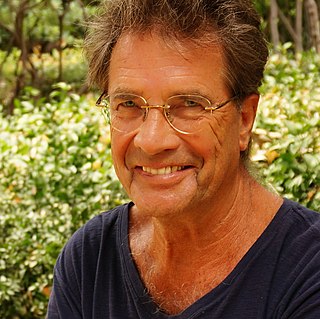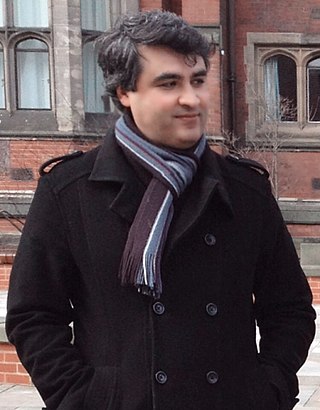
Discourse is a generalization of the notion of a conversation to any form of communication. Discourse is a major topic in social theory, with work spanning fields such as sociology, anthropology, continental philosophy, and discourse analysis. Following pioneering work by Michel Foucault, these fields view discourse as a system of thought, knowledge, or communication that constructs our experience of the world. Since control of discourse amounts to control of how the world is perceived, social theory often studies discourse as a window into power. Within theoretical linguistics, discourse is understood more narrowly as linguistic information exchange and was one of the major motivations for the framework of dynamic semantics, in which expressions' denotations are equated with their ability to update a discourse context.
Stylistics, a branch of applied linguistics, is the study and interpretation of texts of all types, but particularly literary texts, and/or spoken language in regard to their linguistic and tonal style, where style is the particular variety of language used by different individuals and/or in different situations or settings. For example, the vernacular, or everyday language may be used among casual friends, whereas more formal language, with respect to grammar, pronunciation or accent, and lexicon or choice of words, is often used in a cover letter and résumé and while speaking during a job interview.
Discursive psychology (DP) is a form of discourse analysis that focuses on psychological themes in talk, text, and images.

Discourse analysis (DA), or discourse studies, is an approach to the analysis of written, spoken, or sign language, including any significant semiotic event.
Norman Fairclough is an emeritus Professor of Linguistics at Department of Linguistics and English Language at Lancaster University. He is one of the founders of critical discourse analysis (CDA) as applied to sociolinguistics. CDA is concerned with how power is exercised through language. CDA studies discourse; in CDA this includes texts, talk, video and practices.
In the branch of linguistics known as pragmatics, a presupposition is an implicit assumption about the world or background belief relating to an utterance whose truth is taken for granted in discourse. Examples of presuppositions include:

Teun Adrianus van Dijk is a scholar in the fields of text linguistics, discourse analysis and Critical Discourse Analysis (CDA).
Henry George Widdowson is a British linguist and an authority in the field of applied linguistics and language teaching, specifically English language learning and teaching.
Interdiscourse is the implicit or explicit relations that a discourse has to other discourses. Interdiscursivity is the aspect of a discourse that relates it to other discourses. Norman Fairclough prefers the concept "orders of discourse". Interdiscursivity is often mostly an analytic concept, e.g. in Foucault and Fairclough. Interdiscursivity has close affinity to recontextualisation because interdiscourse often implies that elements are imported from another discourse.
Ian Parker is a British psychologist and psychoanalyst. He is Emeritus Professor of Management in the School of Business at the University of Leicester.

Contrastive rhetoric is the study of how a person's first language and his or her culture influence writing in a second language or how a common language is used among different cultures. The term was first coined by the American applied linguist Robert Kaplan in 1966 to denote eclecticism and subsequent growth of collective knowledge in certain languages. It was widely expanded from 1996 to today by Finnish-born, US-based applied linguist Ulla Connor, among others. Since its inception the area of study has had a significant impact on the exploration of intercultural discourse structures that extend beyond the target language's native forms of discourse organization. The field brought attention to cultural and associated linguistic habits in expression of English language.
Recontextualisation is a process that extracts text, signs or meaning from its original context (decontextualisation) and reuses it in another context. Since the meaning of texts, signs and content is dependent on its context, recontextualisation implies a change of meaning and redefinition. The linguist Per Linell defines recontextualisation as:
the dynamic transfer-and-transformation of something from one discourse/text-in-context ... to another.

Ruth Wodak is an Austrian linguist, who is Emeritus Distinguished Professor and Chair in Discourse Studies in the Department of Linguistics and English Language at Lancaster University and Professor in Linguistics at the University of Vienna.
Corpus-assisted discourse studies is related historically and methodologically to the discipline of corpus linguistics. The principal endeavor of corpus-assisted discourse studies is the investigation, and comparison of features of particular discourse types, integrating into the analysis the techniques and tools developed within corpus linguistics. These include the compilation of specialised corpora and analyses of word and word-cluster frequency lists, comparative keyword lists and, above all, concordances.
In linguistics, critical language awareness (CLA) refers to an understanding of social, political, and ideological aspects of language, linguistic variation, and discourse. It functions as a pedagogical application of a critical discourse analysis (CDA), which is a research approach that regards language as a social practice. Critical language awareness as a part of language education teaches students how to analyze the language that they and others use. More specifically, critical language awareness is a consideration of how features of language such as words, grammar, and discourse choices reproduce, reinforce, or challenge certain ideologies and struggles for power and dominance.
Foucauldian discourse analysis is a form of discourse analysis, focusing on power relationships in society as expressed through language and practices, and based on the theories of Michel Foucault.
Media linguistics is the linguistic study of language use in the media. The fundamental aspect of media linguistics as a new systematic approach to the study of media language is that media text is one of the most common forms of language existence today. It studies the functioning of language in the media sphere, or modern mass communication presented by print, audiovisual, digital, and networked media. Media linguistics investigates the relationship between language use, which is regarded as an interface between social and cognitive communication practice, and public discourse conveyed through media.

Critical realism is a philosophical approach to understanding science, and in particular social science, initially developed by Roy Bhaskar (1944–2014). It specifically opposes forms of empiricism and positivism by viewing science as concerned with identifying causal mechanisms. In the last decades of the twentieth century it also stood against various forms of postmodernism and poststructuralism by insisting on the reality of objective existence. In contrast to positivism's methodological foundation, and poststructuralism's epistemological foundation, critical realism insists that (social) science should be built from an explicit ontology. Critical realism is one of a range of types of philosophical realism, as well as forms of realism advocated within social science such as analytic realism and subtle realism.
Feminist post-structuralist discourse analysis (FPDA) is a method of discourse analysis based on Chris Weedon's theories of feminist post-structuralism, and developed as a method of analysis by Judith Baxter in 2003. FPDA is based on a combination of feminism and post-structuralism. While it is still evolving as a methodology, FPDA has been used by a range of international scholars of gender and language to analyse texts such as: classroom discourse, teenage girls' conversation, and media representations of gender. FPDA is an approach to analysing the discourse of spoken interaction principally.

Majid KhosraviNik is a Senior Lecturer in Digital Media and Discourse Studies at Newcastle University, UK.





